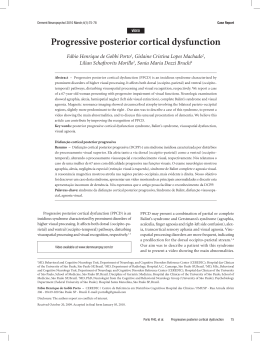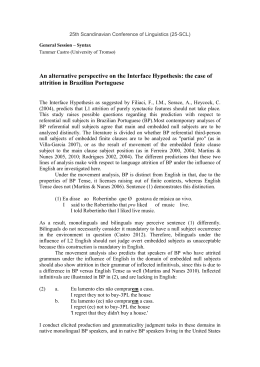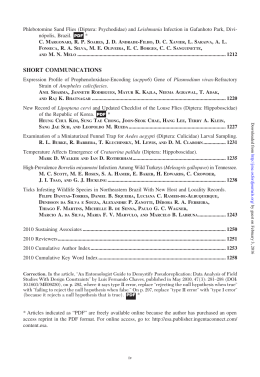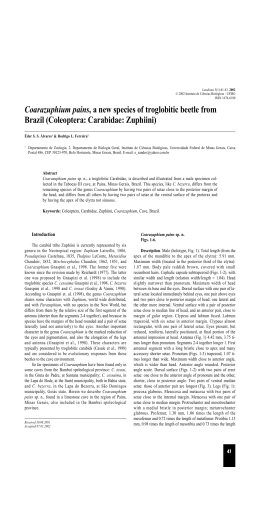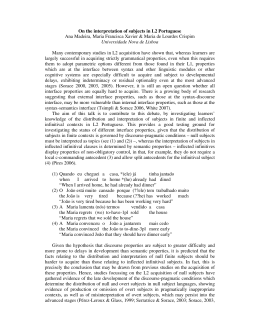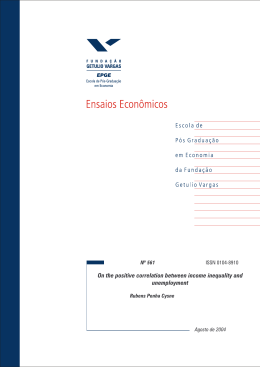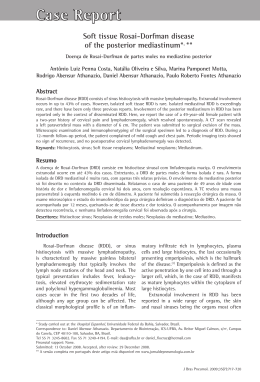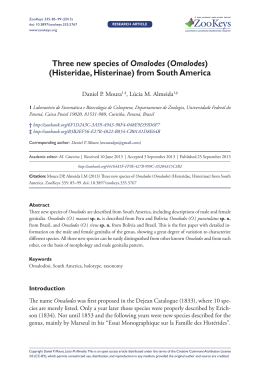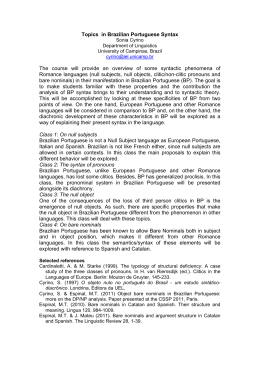Package ‘Bolstad2’ February 19, 2015 Version 1.0-28 Date 2013-06-17 Title Bolstad functions Author James M. Curran <[email protected]> Maintainer James M. Curran <[email protected]> Description A set of R functions and data sets for the book Understanding Computational Bayesian Statistics, Bolstad, W.M. (2009), John Wiley & Sons ISBN 978-0470046098 License GPL (>= 2) URL http://www.waikato.ac.nz/Staff/bolstad NeedsCompilation no Repository CRAN Date/Publication 2013-06-17 11:54:52 R topics documented: AidsSurvival.df . . BayesCPH . . . . . BayesLogistic . . . BayesPois . . . . . bivnormMH . . . . c10ex16.df . . . . chd.df . . . . . . . credInt . . . . . . . credIntNum . . . . credIntSamp . . . . describe . . . . . . GelmanRubin . . . hierMeanReg . . . hiermeanRegTest.df logisticTest.df . . . normGibbs . . . . . . . . . . . . . . . . . . . . . . . . . . . . . . . . . . . . . . . . . . . . . . . . . . . . . . . . . . . . . . . . . . . . . . . . . . . . . . . . . . . . . . . . . . . . . . . . . . . . . . . . . . . . . . . . . . . . . . . . . . . . . . . . . . . . . . . . . . . . . . . . . . . . . . . . . . . . . . . . . . . . . . . . . . . . . . . . . . . . . . . . . . . . . . . . . . . . 1 . . . . . . . . . . . . . . . . . . . . . . . . . . . . . . . . . . . . . . . . . . . . . . . . . . . . . . . . . . . . . . . . . . . . . . . . . . . . . . . . . . . . . . . . . . . . . . . . . . . . . . . . . . . . . . . . . . . . . . . . . . . . . . . . . . . . . . . . . . . . . . . . . . . . . . . . . . . . . . . . . . . . . . . . . . . . . . . . . . . . . . . . . . . . . . . . . . . . . . . . . . . . . . . . . . . . . . . . . . . . . . . . . . . . . . . . . . . . . . . . . . . . . . . . . . . . . . . . . . . . . . . . . . . . . . . . . . . . . . . . . . . . . . . . . . . . . . . . . . . . . . . . . . . . . . . . . . . . . . . . . . . . . . . . . . . . . . . . . . . . . . . . . . . . . . . . . . . . . . . . . . . . . . . . . . . . . . . . . . . . . . . . . . . . . . . . . . . . . . . . 2 2 4 5 6 7 7 8 9 10 11 12 13 14 15 15 2 BayesCPH normMixMH pNull . . . . pnullNum . . pnullSamp . . poissonTest.df sintegral . . . thin . . . . . . . . . . . . . . . . . . . . . . . . . . . . . . . . . . . . . . . . . . . . . . . . . . . . . . . . . . . . . . . . . . . . . . . . . . . . . . . . . . . . . . . . . . . . . . . . . . . . . . . . . . . . . . . . . . . . . . . . . . . . . . . . . . . . . . . . . . . . . . . . . . . . . . . . . . . . . . . . . . . . . . . . . . . . . . . . . . . . . . . . . . . . . . . . . . . . . . . . . . . . . . . . . . . . . . . . . . . . . . . . . . . . . . . . . . . . . . . . . . . . . . . . . . . . . . . . . . . . . . . . . . . . . . . Index . . . . . . . . . . . . . . 17 18 19 20 21 22 23 24 AidsSurvival.df HIV Survival data Description Data from a hypothetical HMO-HIV+ study shown in Table 1.1 of Hosmer, D.W. and Lemeshow, S. (1998) Applied Survival Analysis: Regression Modeling of Time to Event Data, John Wiley and Sons Inc., New York, NY Usage data (AidsSurvival.df) Format A data frame with 100 observations on 7 variables. [,1] [,2] [,3] [,4] [,5] [,6] [,7] BayesCPH id entdate enddate time age drug censor numeric date date numeric numeric factor factor l Subject ID code Entry date (ddmmyr) Entry date (ddmmyr) Survival Time = days between Entry date and End date Age in years History of IV drug use (0 = No, 1 = Yes) Follow-Up Status1 = Death due to AIDS or AIDS related factors (0 = Alive at study end or lost to follow-up) Bayesian Cox Proportional Hazards Modelling Description Uses a Metropolis Hastings scheme on the proportional hazards model to draw sample from posterior. Uses a matched curvature Student’s t candidate generating distribution with 4 degrees of freedom to give heavy tails. BayesCPH 3 Usage BayesCPH(y, t, x, steps = 1000, priorMean = NULL, priorVar = NULL, mleMean = NULL, mleVar, startValue = NULL, randomSeed = NULL, plots = FALSE) Arguments y the Poisson censored response vector. It has value 0 when the variable is censored and 1 when it is not censored. t time x matrix of covariates steps the number of steps to use in the Metropolis-Hastings updating priorMean the mean of the prior priorVar the variance of the prior mleMean the mean of the matched curvature likelihood mleVar the covariance matrix of the matched curvature likelihood startValue a vector of starting values for all of the regression coefficients including the intercept randomSeed a random seed to use for different chains plots Plot the time series and auto correlation functions for each of the model coefficients Value A list containing the following components: beta a data frame containing the sample of the model coefficients from the posterior distribution mleMean the mean of the matched curvature likelihood. This is useful if you’ve used a training set to estimate the value and wish to use it with another data set mleVar the covariance matrix of the matched curvature likelihood. See mleMean for why you’d want this 4 BayesLogistic BayesLogistic Bayesian Logistic Regression Description Performas Metropolis Hastings on the logistic regression model to draw sample from posterior. Uses a matched curvature Student’s t candidate generating distribution with 4 degrees of freedom to give heavy tails. Usage BayesLogistic(y, x, steps = 1000, priorMean = NULL, priorVar = NULL, mleMean = NULL, mleVar, startValue = NULL, randomSeed = NULL, plots = FALSE) Arguments y the binary response vector x matrix of covariates steps the number of steps to use in the Metropolis-Hastings updating priorMean the mean of the prior priorVar the variance of the prior mleMean the mean of the matched curvature likelihood mleVar the covariance matrix of the matched curvature likelihood startValue a vector of starting values for all of the regression coefficients including the intercept randomSeed a random seed to use for different chains plots Plot the time series and auto correlation functions for each of the model coefficients Value A list containing the following components: beta a data frame containing the sample of the model coefficients from the posterior distribution mleMean the mean of the matched curvature likelihood. This is useful if you’ve used a training set to estimate the value and wish to use it with another data set mleVar the covariance matrix of the matched curvature likelihood. See mleMean for why you’d want this BayesPois 5 Examples data(logisticTest.df) BayesLogistic(logisticTest.df$y, logisticTest.df$x) BayesPois Bayesian Pois Regression Description Performs Metropolis Hastings on the logistic regression model to draw sample from posterior. Uses a matched curvature Student’s t candidate generating distribution with 4 degrees of freedom to give heavy tails. Usage BayesPois(y, x, steps = 1000, priorMean = NULL, priorVar = NULL, mleMean = NULL, mleVar, startValue = NULL, randomSeed = NULL, plots = FALSE) Arguments y x steps priorMean priorVar mleMean mleVar startValue randomSeed plots the binary response vector matrix of covariates the number of steps to use in the Metropolis-Hastings updating the mean of the prior the variance of the prior the mean of the matched curvature likelihood the covariance matrix of the matched curvature likelihood a vector of starting values for all of the regression coefficients including the intercept a random seed to use for different chains Plot the time series and auto correlation functions for each of the model coefficients Value A list containing the following components: beta mleMean mleVar a data frame containing the sample of the model coefficients from the posterior distribution the mean of the matched curvature likelihood. This is useful if you’ve used a training set to estimate the value and wish to use it with another data set the covariance matrix of the matched curvature likelihood. See mleMean for why you’d want this 6 bivnormMH Examples data(poissonTest.df) results <- BayesPois(poissonTest.df$y, poissonTest.df$x) bivnormMH Metropolis Hastings sampling from a Bivariate Normal distribution Description This function uses the MetropolisHastings algorithm to draw a sample from a correlated bivariate normal target density using a random walk candidate and an independent candidate density respectively where we are drawing both parameters in a single draw. It can also use the blockwise Metropolis Hastings algorithm and Gibbs sampling respectively to draw a sample from the correlated bivariate normal target. Usage bivnormMH(rho, rho1 = 0.9, sigma = c(1.2, 1.2), steps = 1000, type = 'ind') Arguments rho the correlation coefficient for the bivariate normal rho1 the correlation of the candidate distribution. Only used when type = ’ind’ sigma the standard deviations of the marginal distributions of the independent candidate density. Only used when type = ’ind’ steps the number of Metropolis Hastings steps type the type of candidate generation to use. Can be one of ’rw’ = random walk, ’ind’ = independent normals, ’gibbs’ = Gibbs sampling or ’block’ = blockwise. It is sufficient to use ’r’,’i’,’g’, or ’b’ Value returns a list which contains a data frame called targetSample with members x and y. These are the samples from the target density. Examples ## independent chain chain1.df<-bivnormMH(0.9)$targetSample ## random walk chain chain2.df<-bivnormMH(0.9, type = 'r')$targetSample ## blockwise MH chain chain3.df<-bivnormMH(0.9, type = 'b')$targetSample chd.df 7 ## Gibbs sampling chain chain4.df<-bivnormMH(0.9, type = 'g')$targetSample oldPar <- par(mfrow=c(2,2)) plot(y ~ x, type = 'l', chain1.df, plot(y ~ x, type = 'l', chain2.df, plot(y ~ x, type = 'l', chain3.df, plot(y ~ x, type = 'l', chain4.df, par(oldPar) c10ex16.df main main main main = = = = 'Independent') 'Random Walk') 'Blockwise') 'Gibbs') Chapter 10 Example 16 data Description A random sample of size 10 from a N (µ, σ 2 ) distribution where both mu and sigma are unknown parameters. Usage data(c10ex16.df) Format A data frame with 10 observations in a single variable called y chd.df Coronary Heart Disease Chapter 8 Example 11 Description The age and coronory heart disease status of 100 individuals taken from Hosmer and Lemeshow (1989). Usage data(chd.df) Format A data frame with 100 observations in two columns [,1] [,2] age chd numeric numeric factor age in years coronary heat disease status. Levels (1 = Yes), (0 = No) 8 credInt credInt Calculate a credible interval from a numerically specified posterior CDF or from a sample from the posterior Description Calculates a lower, upper, or two-sided credible interval from the numerical posterior CDF or from a sample from the posterior. Usage credInt(theta, cdf = NULL, conf = 0.95, type="twosided") Arguments theta cdf either a sample from the posterior density or the values over which the the posterior CDF is specified Rθ the values of the CDF, F (θ) = −∞ f (t).df where f (t) is the PDF. This only needs to be specified if a numerically specified posterior is being used conf the desired ’confidence’ level type the type of interval to return, ’lower’ = one sided lower bound, ’two-sided’ = two - sided, or ’upper’ = one sided upper bound. It is sufficient to use ’l’,’t’ or ’u’ Details This function uses linear interpolation to calculate bounds for points that may not be specified by CDF Value a list containing the elements lower.bound, uppper.bound or both depending on type Examples ## commands for calculating a numerical posterior CDF. ## In this example, the likelihood is proportional to ## \eqn{\theta^{3/2}\times \exp(-\theta/4)} and a N(6, 9) prior is used. theta <- seq(from = 0.001, to = 40, by = 0.001) prior <- dnorm(theta,6,3) ppnLike <- theta^1.5*exp(-theta/4) ppnPost <- prior*ppnLike scaleFactor <- sintegral(theta, ppnPost)$int posterior <- ppnPost/scaleFactor cdf <- sintegral(theta, posterior)$y ci<-credInt(theta, cdf) par(mfrow=c(2,2)) plot(prior ~ theta, type = 'l', main = "Prior N(6, 9)") credIntNum 9 plot(ppnLike ~ theta, type = 'l', main = "Proportional likelihood") plot(posterior ~ theta, type = 'l', main = "Posterior") abline(v=c(unlist(ci))) ## Use an inverse method to take a random sample of size 1000 ## from the posterior suppressWarnings(Finv<-approxfun(cdf,theta)) thetaSample<-Finv(runif(1000)) ci<-credInt(thetaSample) credIntNum Calculate a credible interval from a numerically specified posterior CDF Description Calculates a lower, upper, or two-sided credible interval from the numerical posterior CDF. Usage credIntNum(theta, cdf, conf = 0.95, type="twosided") Arguments theta cdf the values over which the the posterior CDF is specified Rθ the values of the CDF, F (θ) = −∞ f (t).df where f (t) is the PDF. conf the desired ’confidence’ level type the type of interval to return, ’lower’ = one sided lower bound, ’two-sided’ = two - sided, or ’upper’ = one sided upper bound. It is sufficient to use ’l’,’t’ or ’u’ Details This function uses linear interpolation to calculate bounds for points that may not be specified by CDF Value a list containing the elements lower.bound, uppper.bound or both depending on type Examples ## commands for calculating a numerical posterior CDF. ## In this example, the likelihood is proportional to ## \eqn{\theta^{3/2}\times \exp(-\theta/4)} and a N(6, 9) prior is used. theta <- seq(from = 0.001, to = 40, by = 0.001) prior <- dnorm(theta,6,3) ppnLike <- theta^1.5*exp(-theta/4) 10 credIntSamp ppnPost <- prior*ppnLike scaleFactor <- sintegral(theta, ppnPost)$int posterior <- ppnPost/scaleFactor cdf <- sintegral(theta, posterior)$y ci<-credIntNum(theta, cdf) par(mfrow=c(2,2)) plot(prior ~ theta, type = 'l', main = "Prior N(6, 9)") plot(ppnLike ~ theta, type = 'l', main = "Proportional likelihood") plot(posterior ~ theta, type = 'l', main = "Posterior") abline(v=c(unlist(ci))) credIntSamp Calculate a credible interval from a numerically specified posterior CDF Description Calculates a lower, upper, or two-sided credible interval from the numerical posterior CDF. Usage credIntSamp(theta, conf = 0.95, type="twosided") Arguments theta a sample from the posterior density conf the desired ’confidence’ level type the type of interval to return, ’lower’ = one sided lower bound, ’two-sided’ = two - sided, or ’upper’ = one sided upper bound. It is sufficient to use ’l’,’t’ or ’u’ Details This function uses linear interpolation to calculate bounds for points that may not be specified by CDF Value a list containing the elements lower.bound, uppper.bound or both depending on type Examples ## posterior is N(0,1) theta <- rnorm(1000) ci<-credIntSamp(theta) plot(density(theta)) abline(v=c(unlist(ci))) describe describe 11 Give simple descriptive statistics for a matrix or a data frame Description This function is designed to emulate the Minitab function DESCRIBE. It gives simple descriptive statistics for a data frame Usage describe(x, varNames = NULL) Arguments x A matrix or data.frame with numeric entries. Different variables are represented by columns. varNames A vector of variable names for each of the columns Value A data.frame containing the following elements: N The number of observations for each variable mean The sample mean for each variable stdev The sample standard deviation sterr The standard error of the mean min The minimum q1 The lower quartile med The median q3 The upper quartile max The maximum Examples data(poissonTest.df) describe(poissonTest.df) 12 GelmanRubin GelmanRubin Calculate the Gelman Rubin statistic Description Calculate the Gelman Rubin statistic Usage GelmanRubin(theta) GR(theta) Arguments theta A matrix containing samples from at least two chains on a parameter theta. Each chain should 2n iterations. The last n iterations will be used to calculate the statistic Value A list containing n, the between chain variance B, the within chain p variance W, the estimated variance of the parameter vHat, and the Gelman Rubin statistic R = vHat/W References Gelman, A. and Rubin, D.B. (1992) ’Inference from iterative simulations using multiple sequences with discussion.’ Statistical Science 8, pp. 457-511 Examples ## take four chains sampling from a normal mixture density theta0 <- c(0,1) theta1 <- c(3,2) p <- 0.6 candidate <- c(0, 3) v1 v2 v3 v4 <<<<- normMixMH(theta0, normMixMH(theta0, normMixMH(theta0, normMixMH(theta0, theta1, theta1, theta1, theta1, theta<-cbind(v1,v2,v3,v4) GelmanRubin(theta) p, p, p, p, candidate, candidate, candidate, candidate, steps steps steps steps = = = = 200) 200) 200) 200) hierMeanReg hierMeanReg 13 Hierarchical Normal Means Regression Model Description fits a hierarchical normal model of the form E[yij ] = µj + β1 xi1 + . . . + βp xip Usage hierMeanReg(design, priorTau, priorPsi, priorVar, priorBeta = NULL, steps = 1000, startValue = NULL, randomSeed = NULL) Arguments design a list with elements y = response vector, group = grouping vector, x = matrix of covariates or NULL if there are no covariates priorTau a list with elements tau0 and v0 priorPsi a list with elements psi0 and eta0 priorVar a list with elements s0 and kappa0 priorBeta a list with elements b0 and bMat or NULL if x is NULL steps the number of Gibbs sampling steps to take startValue a list with possible elements tau, psi, mu, sigmasq and beta. tau, psi and sigmasq must all be scalars. mu and beta must be vectors with as many elements as there are groups and covariates respectively randomSeed a random seed for the random number generator Value A data frame with variables: tau Samples from the posterior distribution of tau psi Samples from the posterior distribution of psi mu Samples from the posterior distribution of mu beta Samples from the posterior distribution of beta if there are any covariates sigmaSq Samples from the posterior distribution of σ 2 sigma Samples from the posterior distribution of sigma 14 hiermeanRegTest.df Examples priorTau <- list(tau0 = 0, v0 = 1000) priorPsi <- list(psi0 = 500, eta0 = 1) priorVar <- list(s0 = 500, kappa0 = 1) priorBeta <- list(b0 = c(0,0), bMat = matrix(c(1000,100,100,1000), nc = 2)) data(hiermeanRegTest.df) data.df <- hiermeanRegTest.df design <- list(y = data.df$y, group = data.df$group, x = as.matrix(data.df[,3:4])) r<-hierMeanReg(design, priorTau, priorPsi, priorVar, priorBeta) oldPar <- par(mfrow = c(3,3)) plot(density(r$tau)) plot(density(r$psi)) plot(density(r$mu.1)) plot(density(r$mu.2)) plot(density(r$mu.3)) plot(density(r$beta.1)) plot(density(r$beta.2)) plot(density(r$sigmaSq)) par(oldPar) ## example with no covariates priorTau <- list(tau0 = 0, v0 = 1000) priorPsi <- list(psi0 = 500, eta0 = 1) priorVar <- list(s0 = 500, kappa0 = 1) data(hiermeanRegTest.df) data.df <- hiermeanRegTest.df design <- list(y = data.df$y, group = data.df$group, x = NULL) r<-hierMeanReg(design, priorTau, priorPsi, priorVar) oldPar <- par(mfrow = c(3,2)) plot(density(r$tau)) plot(density(r$psi)) plot(density(r$mu.1)) plot(density(r$mu.2)) plot(density(r$mu.3)) plot(density(r$sigmaSq)) par(oldPar) hiermeanRegTest.df Test data for hiermeanReg Description Data for testing hiermeanReg which uses Gibbs sampling on a hierarchical normal mean model with regression on covariates normGibbs 15 Usage data(hiermeanRegTest.df) Format A data frame with 30 observations on 4 variables. \ [1,] [2,] [3,] [4,] y group x1 x2 numeric factor numeric numeric the response vector the grouping factor levels 1-3 the first covariate the second covariate See Also hiermeanReg logisticTest.df Test data for bayesLogistic Description A test data set for bayesLogisticReg Usage data(logisticTest.df) Format A data frame with 100 observations on 6 variables. [1,] [2,] [3,] [4,] [5,] [6,] x eps logit.p p u y numeric numeric numeric numeric numeric binary the covariate the error in the response the logit of the probability of success given x = 2 + 3*x + eps the probability of success given x a U[0,1] random variable if u[i]<p[i] = 1, otherwise 0 See Also bayesLogistic normGibbs Draw a sample from a posterior distribution of data with an unknown mean and variance using Gibbs sampling 16 normGibbs Description normGibbs draws a Gibbs sample from the posterior distribution of the parameters given the data fron normal distribution with unknown mean and variance. The prior for µ given var is prior mean m0 and prior variance var/n0 . That means n0 is the ’equivalent sample size.’ The prior distribution of the variance is s0 times an inverse chi-squared with kappa0 degrees of freedom. The joint prior is the product g(var)g(mu|var). Usage normGibbs(y, steps = 1000, type = 'ind', ...) Arguments y A vector containing the data steps The number of iterations of Gibbs sampling to carry out type Either ’ind’ for sampling from an independent conjugate prior or ’joint’ for sampling from a joint conjugate prior. ’i’ and ’j’ can be used as compact notation ... If type = ’ind’ then the user can specify the prior for µ with a parameter priorMu which can either be a single number m0, or m0 and n0. if m0 and n0 are not specified then m0 and n0 are 0 by default. The user can also specify priorVar, which if given, must be a vector with two elements s0 and kappa0. If s0 and kappa0 are not given then they are zero by default. If type = ’joint’ then priorMu must be a vector of length two with elements m0 and sd0. The user can also specify priorVar, which if given, must be a vector with two elements s0 and kappa0. If s0 and kappa0 are not given then they are zero by default. Value A data frame containing three variables [1,] [2,] [3,] mu sig mu a sample from the posterior distribution of the mean a sample from the posterior distribution of the standard deviation a sample from the posterior distribution of the variance = sig^2 Author(s) James M. Curran Examples ## firstly generate some random data mu <- rnorm(1) sigma <- rgamma(1,5,1) y <- rnorm(100, mu, sigma) ## A \eqn{N(10,3^2)} prior for \eqn{\mu} and a 25 times inverse chi-squared ## with one degree of freedom prior for \eqn{\sigma^2} MCMCSampleInd <- normGibbs(y, steps = 5000, priorMu = c(10,3), normMixMH 17 priorVar = c(25,1)) ## We can also use a joint conjugate prior for \eqn{\mu} and \eqn{\sigma^2}. ## This will be a \emph{normal}\eqn{(m,\sigma^2/n_0)} prior for \eqn{\mu} given ## the variance \eqn{\sigma^2}, and an \eqn{s0} times an \emph{inverse ## chi-squared} prior for \eqn{\sigma^2}. MCMCSampleJoint <- normGibbs(y, steps = 5000, type = 'joint', priorMu = c(10,3), priorVar = c(25,1)) ## Now plot the results oldPar <- par(mfrow=c(2,2)) plot(density(MCMCSampleInd$mu),xlab=expression(mu), main = "Independent") abline(v=mu) plot(density(MCMCSampleInd$sig),xlab=expression(sig), main = "Independent") abline(v=sigma) plot(density(MCMCSampleJoint$mu),xlab=expression(mu), main = "Joint") abline(v=mu) plot(density(MCMCSampleJoint$sig),xlab=expression(sig), main = "Joint") abline(v=sigma) normMixMH Sample from a normal mixture model using Metropolis-Hastings Description normMixMH uses the Metropolis-Hastings algorithm to draw a sample from a univariate target distribution that is a mixture of two normal distributions using an independent normal candidate density or a random walk normal candidate density. Usage normMixMH(theta0, theta1, p, candidate, steps = 1000, type = 'ind', randomSeed = NULL, startValue = NULL) Arguments theta0 A vector of length two containing the mean and standard deviation of the first component of the normal mixture theta1 A vector of length two containing the mean and standard deviation of the second component of the normal mixture 18 pNull p A value between 0 and 1 representing the mixture proportion, so that the true density is p × f (µ1, σ1) + (1 − p) × f (µ2 , σ2 ) candidate A vector of length two containing the mean and standard deviation of the candidate density steps The number of steps to be used in the Metropolis-Hastings algorithm. steps must be greater than 100 type Either ’ind’ or ’rw’ depending on whether a independent candidate density or random walk candidate density is to be used. ’i’ and ’r’ may be used as alternative compact notation startValue A starting value for the chain randomSeed A seed for the random number generator. Only used when you want the same sequence of random numbers in the chain Value A vector containing a sample from the normal mixture distribution. Examples ## Set up the normal mixture theta0 <- c(0,1) theta1 <- c(3,2) p <- 0.8 ## Sample from an independent N(0,3^2) candidate density candidate <- c(0, 3) MCMCsampleInd <- normMixMH(theta0, theta1, p, candidate) ## If we wish to use the alternative random walk N(0, 0.5^2) ## candidate density candidate <- c(0, 0.5) MCMCsampleRW <- normMixMH(theta0, theta1, p, candidate, type = 'rw') pNull Test a one sided hypothesis from a numerically specified posterior CDF or from a sample from the posterior Description Calculates the probability of a one sided null hypothesis from a numerically calculated posterior CDF or from a sample from the posterior. Usage pNull(theta0, theta, cdf = NULL, type = 'upper') pnullNum 19 Arguments theta0 the hypothesized value, i.e. H0: theta <= theta0 theta a sample of values from the posterior density, or, if cdf is not NULL then the values over which the the posterior CDF is specified Rθ the values of the CDF, F (θ) = −∞ f (t).df where f (t) is the PDF. cdf type the type of probability to return, ’lower’ = Pr(theta <= theta0) or ’upper’ = Pr(theta >= theta0). It is sufficient to use ’l’ or ’u’ Details This function uses linear interpolation to calculate bounds for points that may not be specified by CDF Value a list containing the element prob which will be the upper or lower tail probability depending on type Examples ## commands for calculating a numerical posterior CDF. ## In this example, the likelihood is proportional to ## \eqn{\theta^{3/2}\times \exp(-\theta/4)} and a N(6, 9) prior is used. theta <- seq(from = 0.001, to = 40, by = 0.001) prior <- dnorm(theta,6,3) ppnLike <- theta^1.5*exp(-theta/4) ppnPost <- prior*ppnLike scaleFactor <- sintegral(theta, ppnPost)$int posterior <- ppnPost/scaleFactor cdf <- sintegral(theta, posterior)$y pNull(15, theta, cdf) ## Use an inverse method to take a random sample of size 1000 ## from the posterior suppressWarnings(Finv <- approxfun(cdf, theta)) thetaSample<-Finv(runif(1000)) pNull(15, thetaSample) pnullNum Test a one sided hypothesis from a numerically specified posterior CDF Description Calculates the probability of a one sided null hypothesis from a numerically calculated posterior CDF. 20 pnullSamp Usage pnullNum(theta0, theta, cdf, type = 'upper') Arguments theta0 the hypothesized value, i.e. H0: theta <= theta0 theta the values over which the the posterior CDF is specified Rθ the values of the CDF, F (θ) = −∞ f (t).df where f (t) is the PDF. cdf type the type of probability to return, ’lower’ = Pr(theta <= theta0) or ’upper’ = Pr(theta >= theta0). It is sufficient to use ’l’ or ’u’ Details This function uses linear interpolation to calculate bounds for points that may not be specified by CDF Value a list containing the element prob which will be the upper or lower tail probability depending on type Examples ## commands for calculating a numerical posterior CDF. ## In this example, the likelihood is proportional to ## \eqn{\theta^{3/2}\times \exp(-\theta/4)} and a N(6, 9) prior is used. theta <- seq(from = 0.001, to = 40, by = 0.001) prior <- dnorm(theta,6,3) ppnLike <- theta^1.5*exp(-theta/4) ppnPost <- prior*ppnLike scaleFactor <- sintegral(theta, ppnPost)$int posterior <- ppnPost/scaleFactor cdf <- sintegral(theta, posterior)$y pnullNum(1, theta, cdf) pnullSamp Test a one sided hypothesis using a sample from a posterior density Description Calculates the probability of a one sided null hypothesis from a sample from a posterior density. Usage pnullSamp(theta, theta0 = 0, type = 'upper') poissonTest.df 21 Arguments theta a sample of values from a posterior density theta0 the hypothesized value, i.e. H0: theta <= theta0 type the type of probability to return, ’lower’ = Pr(theta <= theta0) or ’upper’ = Pr(theta >= theta0). It is sufficient to use ’l’ or ’u’ Details This function uses linear interpolation to calculate bounds for points that may not be specified by CDF Value a list containing the element prob which will be the upper or lower tail probability depending on type Examples ## The posterior density is N(3,1) theta <- rnorm(1000,3) ## test whether the true mean is greater than 0 (it is obviously!) pnullSamp(theta) poissonTest.df A test data set for bayesPois Description A test data set for bayesPois. The data come from the equation log(λi ) = 1 + 5xi + i where i comes from N(0,0.01). Usage data(poissonTest.df) Format A data frame with 100 observations on 5 variables. [1,] [2,] [3,] [4,] [5,] x eps log.lam lam y numeric numeric numeric numeric numeric the covariate the error in the log response log(λi ) = 1 + 5xi + i where i exp(log(λ)) a Poisson random variate with mean λi 22 sintegral See Also bayesPois sintegral Numerical integration using Simpson’s Rule Description Takes a vector of x values and a corresponding set of postive f (x) = y values and evaluates the area under the curve: Z f (x)dx . Usage sintegral(x, fx, n.pts = 256) Arguments x a sequence of x values. fx the value of the function to be integrated at x. n.pts the number of points to be used in the integration. Value returns a list with the following elements x the x-values at which the integral has been evaluated y the cummulative integral int the value of the integral over the whole range Examples ## integrate the normal density from -3 to 3 x<-seq(-3,3,length=100) fx<-dnorm(x) estimate<-sintegral(x,fx)$int true.val<-diff(pnorm(c(-3,3))) cat(paste("Absolute error :",round(abs(estimate-true.val),7),"\n")) cat(paste("Relative percentage error :", 100*round((abs(estimate-true.val)/true.val),6),"%\n")) thin 23 thin Thin an MCMC sample Description Thins the output from an MCMC process Usage thin(x, k) Arguments x A vector, matrix or data.frame containing output from an MCMC sampling scheme k An integer. This function takes every kth element from x Details Note this function does not check to see if k is sensible. Value A thinned vector, matrix or data frame containing every kth element of x. Examples ## A blockwise Metropolis-Hastings chain of 1000 elements, thinned to ## 5th element ## MCMCSampleBW <- bivnormMH(0.9, type = 'block') MCMCSampleBW <- thin(MCMCSampleBW, 5) Index poissonTest.df, 21 ∗Topic datasets AidsSurvival.df, 2 c10ex16.df, 7 chd.df, 7 hiermeanRegTest.df, 14 logisticTest.df, 15 poissonTest.df, 21 ∗Topic misc sintegral, 22 sintegral, 22 thin, 23 AidsSurvival.df, 2 BayesCPH, 2 BayesLogistic, 4 BayesPois, 5 bivnormMH, 6 c10ex16.df, 7 chd.df, 7 credInt, 8 credIntNum, 9 credIntSamp, 10 describe, 11 ex16.df (c10ex16.df), 7 GelmanRubin, 12 GR (GelmanRubin), 12 hierMeanReg, 13 hiermeanRegTest.df, 14 logisticTest.df, 15 normGibbs, 15 normMixMH, 17 pNull, 18 pnullNum, 19 pnullSamp, 20 24
Download
